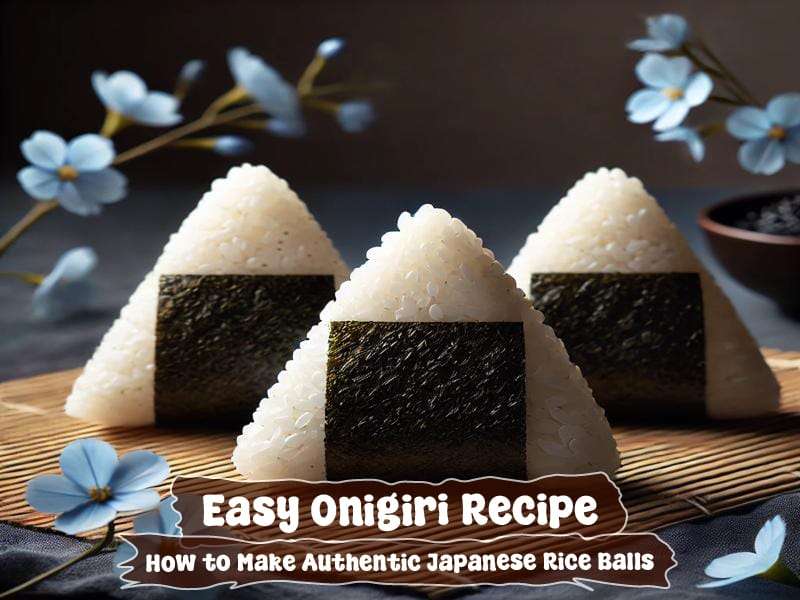
Classic Onigiri Recipe with Tuna, Salmon, or Pickled Plum
A well-made Onigiri Recipe depends on balance and technique - rice that’s seasoned just right, firm enough to hold shape, but soft enough to bite through easily. The key is using warm, slightly salted short-grain rice and shaping it gently by hand. Over-pressing makes the rice dense, while using too much filling causes the ball to fall apart.This recipe is for anyone who wants a simple, traditional Japanese snack that can be customized with different fillings like tuna mayo, pickled plums, or grilled salmon.Difficulty: Easy
Ingredients
Method
- Cook rice. Rinse the rice in cold water until clear, then cook using a rice cooker or pot with 2 ½ cups of water. Let it rest for 10 minutes after cooking.
- Season the rice. Transfer to a bowl, sprinkle lightly with salt, and mix gently.
- Prepare your hands. Wet your hands with salted water to prevent sticking.
- Shake onigiri. Take a handful of rice (about ⅓ cup), make a small dent in the middle, add the filling, and gently form it into a triangle or round ball.
- Add nori. Wrap a strip or half a sheet of nori around the onigiri for grip and flavor.
- Serve or store. Eat fresh, or wrap in plastic and refrigerate for up to 24 hours.
Video
Notes
Rice texture: Short-grain rice is essential because it's sticky enough to hold its shape.
Gentle pressure: Shape firmly but lightly; pressing too hard makes the rice tough.
Salted water: Keeps rice from sticking to your hands.
Storage: Wrap in plastic or pack in a separate nori sheet to keep crisp.
Tips & Tricks
- Right temperature: Shape rice while it’s still warm, not hot or cold.
- Variety: Try fillings like kimchi, teriyaki chicken, or chopped pickles.
- For crisp nori: Add seaweed right before eating to prevent sogginess.
- Meal prep: Store unwrapped onigiri in the fridge and reheat briefly before serving.
- Portable meal: Ideal for lunchboxes, travel, or picnics.
Serving Suggestions
- Lunchbox: Paired with miso soup and pickled vegetables.
- Snack: Enjoy plain with a bit of soy sauce or furikake.
- Breakfast: served with green tea and tamagoyaki (Japanese omelet).
- Picnic: Pack a variety of different fillings for sharing.
- Party platter: Arrange on a tray with colorful fillings for guests.
Nutrition (per onigiri, with tuna filling)
- Calories: ~190
- Protein: 6 g
- Carbs: 33 g
- Fat: 4 g
- Fiber: 1 g



